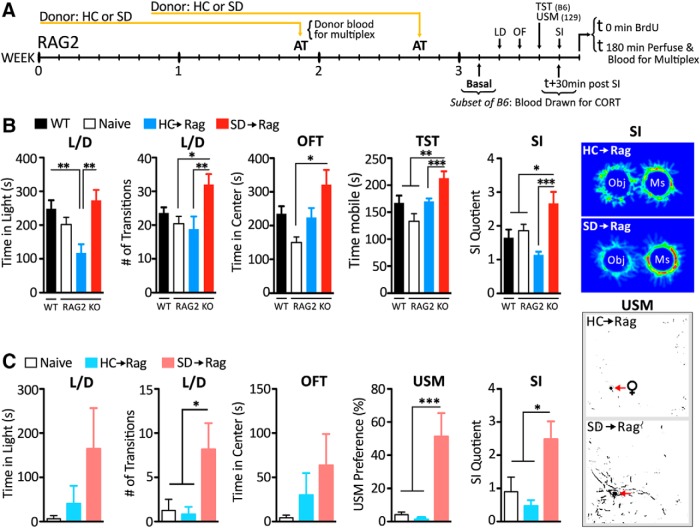Figure 1.
Transfer of lymphocytes from stressed mice confers behavioral resilience in two strains of Rag2−/− mice. The experimental time line is shown in A. Following adoptive transfer (AT) of cells from SD or HC donors, SD→Rag mice on a C57BL/6 background (n = 12–16 per group; B) showed increased time in light and elevated transitions in the L/D box, increased center time in the OFT, increased mobility in the TST, and enhanced preference for SI. Behavioral profiles between C57BL/6 WT and naive Rag2−/− mice on the same background were comparable. SD→Rag mice on 129 background (n = 6–8 per group; C) showed comparable anxiolytic changes in the L/D test and significantly enhanced expressions of socially affiliative behaviors measured in the USM and SI tests. Post hoc significances marked. *p < 0.5; **p < 0.01; ***p < 0.001. Heat maps show digitized behavior in the SI task, and binarized maps show marking behavior to female urine in the USM test.

